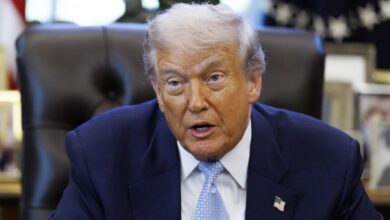Venezuela: Will the Petro survive in 2019?
Listen this article
Looking for some stability, Venezuela created a "cryptocurrency" that doesn't fully fit yet and that seems to be a new form of debt

As an attempt to build an effective instrument to get out of the deep economic crisis that Venezuela is going through, Maduro's government announced the creation of a new "cryptocurrency" called the Petro, in the first quarter of 2018. The event attracted attention recently both by incredulous and unwary, among other things thanks to the government propaganda apparatus, but also due to the need to look for alternatives to navigate the crisis. Then, what prospects for survival does Petro have for the upcoming year?
Leer en español: Venezuela: ¿Sobrevivirá el Petro en 2019?
The Petro was announced in the middle of the worst crisis in the history of Venezuela. After the fall in oil prices in mid-2014, the economy felt (once again) the enormous weight that oil revenues have, drastically reducing their imports and causing a huge imbalance in their macroeconomic variables.
The country entered hyperinflation for the first time, has accumulated a fall of more than 30% of GDP in the last 5 years, has high levels of scarcity of all types of goods – essentially the food basket -, public services are inefficient because of the lack of maintenance and investment and the highest fuel subsidy in the world. This situation causes contraband on the Colombian border, enriching mafias and further eroding the finances of PDVSA, a petroleum company in Venezuela.
Dependency on PDVSA worries
With this dark panorama, many doubts arise about the real function of Petro and its possibilities of facing the crisis. The government claims that it is a cryptocurrency based on oil reserves. However, two fundamental questions arise taking IGNORE INTO account the situation.
First of all, the question is about its essence as a cryptocurrency, since these are characterized by not being issued by any centralized government entity and have no support whatsoever, except in the confidence they can obtain in the market. Secondly, the other questioning is about the support that the government announces for that currency. The latter leads us to ask ourselves about the situation of the oil industry: which entity is the generator of the barrels that would support the Petro?
The state oil company is the locomotive of the Venezuelan economy, generating more than 95% of exports in foreign currency in a country whose industrial apparatus has been stagnant for decades, so that a significant drop in the prices of the barrel, as occurred in 2014, has a strong impact on the non-oil economy.
The problem is that while there was enough oil rent, the limitations of this sector of the economy were not felt. Now, that the rent has been contracted, the oil revenues are not enough to cover the debt payments, the imports that cover the production deficit of the unproductive industrial apparatus -and now almost paralyzed-, neither the own investment and maintenance needs of PDVSA for its operation.
Backing the Petro
Oil production since 1998 shows a clear downward trend. However, it is mainly after the debacle in prices of 50% in 2014, that production shows a vertiginous drop, falling to less than 2 million barrels per day for the first time in more than 30 years. This fall, by the way, did not reverse or slow down in 2017, despite the significant recovery in the barrel's price of 68%. With this scenario, of the collapse of the production of the main industry of the country, the Petro seems not to have great sustenance.
Although Venezuela has the largest reserves of crude oil in the world, the development of these reserves is key in the short term to provide sustenance for Petro. That is to say, one thing is to certify oil in the deposits and another is to have the investment and infrastructure to undertake the developments that allow their extraction and thus generate the confidence necessary to offer the oil as sustenance of the cryptocurrency Petro.
Read also: It was not a 'Goodyear' for multinationals in Venezuela
Everything seems to indicate that the current crisis of the Venezuelan economy, starting with its main industry, thirsty and urged by foreign currency, together with the recent financial sanctions of the US government and the declarations of selective default of some debt bonds, makes the Maduro government to look for alternatives and new sources of financing. Then, the Petro, rather than a cryptocurrency in the style of Bitcoin or Ethereum, would be a new form of encrypted debt that seeks a bypass of sanctions and difficulties in attracting new currency.
The great challenge is a generation of trust -beyond the fact that Venezuela actually has the oil reserves destined to "back" the Petro-, which allows investors to buy the cryptocurrency. Taking IGNORE INTO account the little confidence it generated, Petro's success would be achieved by offering large discounts and having the large foreign oil companies as the main muscle of interest and political closeness with the government. Thus, mainly the Russian and Chinese oil companies will be called to buy the new cryptocurrency, that is, the purchase of oil in the future. Petro's survival depends on the demand beyond the year in which it was invented.
LatinAmerican Post | Luis Alberto Lozada
Translated from "Venezuela: ¿sobrevivirá el Petro en 2019?"





